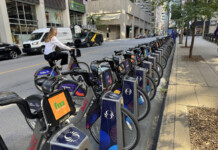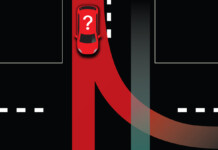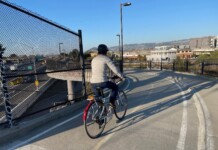Guest Editorial by Chad Mullins
Dangerous conditions persist on state roads because the Utah Department of Transportation has chosen not to incorporate safety improvements in repaving projects under their “Orange Book Policy” for preventive maintenance. Under the “no changes” Orange Book Policy, the department ignores opportunities to make existing streets safer and more efficient.
While UDOT is spending an unprecedented amount of money building new state-of-the-art intersections, expressways and expanded freeways, the “no changes” policy for resurfacing roads condemns urban users of state roads to inadequate, obsolete and often dangerous streets that were designed for conditions that existed decades ago.
This was not the intent according to the 2008 “Orange Book Safety Improvement Guidelines” posted on the UDOT website, “All preventive maintenance projects should consider appropriate ways to maintain or enhance the current level of safety and accessibility. . . Obvious deficiencies should always be addressed . . . Safety enhancements . . . should be included in projects where they are determined to be a cost effective way to improve safety.”
UDOT’s “no changes” practice perpetuates road configurations that may have been appropriate for less developed areas decades ago, but are woefully inadequate for today’s more urbanized neighborhoods with different land uses, many more residents and new road users such as pedestrians, bicyclists and transit riders. These neighborhood changes demand newer safety enhancements that meet current population needs and protect the safety of pedestrians and bicyclists. Many of these roads were built when there were so few residents that bus stops and sidewalks were deemed unnecessary.
Minor modifications, such as repairing and widening the road shoulders, re-striping the lanes, removing obstacles, adding “share the road” signage and pavement markings, make streets safer and more efficient for everyone.
Such changes may require additional time and effort in surveying and engineering; however, the long term safety benefits associated with the prevention of costly accidents and potential deaths for our most vulnerable citizens far out-weigh the short-term expediency of the “no changes” policy.
Furthermore, once a road has been repaved another decade may pass before there is another opportunity to improve safety conditions.
900 East in Murray is a prime example of a roadway with obsolete segments crying out for improvements to enhance safety and make the roadway more efficient. Newer improved sections of 900 East provide wide sidewalks and ample road shoulders, which have made 900 East a popular and heavily used north-south corridor for bicycle commuters. But, older sections of 900 East reflect a time when bus stops and sidewalks were not needed. In the older sections the narrow street shoulders frequently disappear, forcing pedestrians and bicyclists to suddenly merge with automobiles in the traffic lane.
Such conditions are dangerous for pedestrians and bicyclists and impede efficient traffic movement.
Repaving 900 East from Van Winkle to I-215 is scheduled for 2012, creating a golden opportunity to correct the obvious deficiencies. However, because of UDOT’s “Orange Book” policy those obsolete sections of 900 East will remain frozen in time.
It is time to stop perpetuating the deplorable conditions that currently exist for non-motorists on State roads in urban areas. UDOT’s “no changes” practice negatively impacts every community, as well as UTA’s efforts to improve pedestrian/bicyclist access to public transit. Community efforts to encourage healthy, active, alternative modes of travel in the Wasatch Front are often thwarted by our State road system. The time has come for Utah’s Department of Transportation to demonstrate that it is prepared to serve all urban roadway users in a manner appropriate for the 21st century.
UDOT needs to revise their “no changes” practice and use re-surfacing projects as an opportunity to improve safety conditions and make our streets more efficient for everyone.
[Note: This editorial also appeared in the Salt Lake Tribune]
Chad Mullins is Chair of the Salt Lake County Bicycle Advisory Committee.











